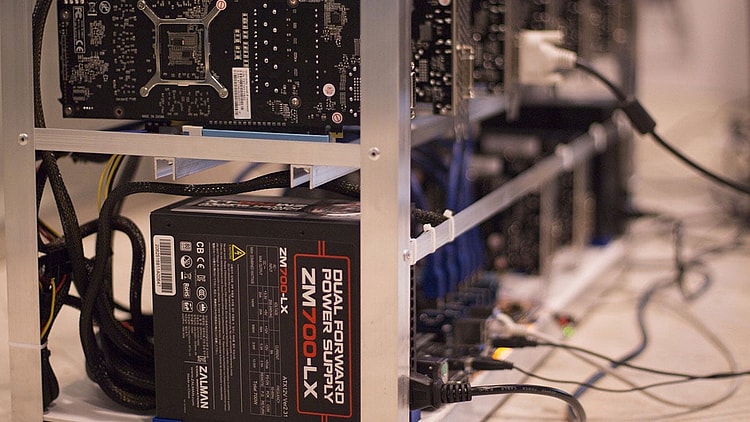
NFT stands for Non-Fungible Token. They are blockchain assets, like cryptocurrency. Each token is unique and cannot be replaced:
Consider an NFT like a piece of art (which it often is). It is one of a kind, it can be traded, sold, or lost. Yet, duplication would be considered a forgery and fake.
In March 2021, famed auction house Christie’s sold an NFT collage of 5,000 images for a staggering $69 million.
However, what about the NFT environmental impact?
CHECK OUT: 10 Most Expensive Non-Fungible Tokens (NFTs) So Far
How Do NFTs Hurt The Environment?
The big question over NFTs is power consumption. For example, the “Space Cat” NFT, which is a GIF of a cat going to the Moon, has a carbon footprint that matches that of two months of electricity usage in a European home.
This principle is based on the energy consumption needed to mine the cryptocurrency the NFT is built on, and the cryptocurrency mined that drives NFT marketplaces.
The question is whether the power consumption would still be present if the “Space Cat” NFT was never made? We believe it would be, and that NFTs aren’t damaging the environment – crypto-mining is.
CHECK OUT: $340k Banksy NFT About Climate Change Is Fake
The Heart Of The Problem
Cryptocurrencies, mainly Bitcoin, have seen a rise in 2009. Since it became established and a number of people became overnight millionaires, it has got the red eyes of big investors. Due to this, it is a sensation in every segment of society.
More so, cryptocurrencies, such as Bitcoin and Altcoins, have been elevated to a pedestal where they command more attention since the rise of Bitcoin, among other cryptocurrencies.
Furthermore, transactions in cryptocurrency don’t have a bad effect on climate, but its mining, aka minting new coins, does impact energy consumption and potentially global climate change.
Currently, Bitcoin mining consumes a considerable amount of energy, while the race to build the strongest mining rig generates a significant amount of electronic waste.
So, what is the environmental cost of cryptocurrency? What is the effect of mining and transferring crypto on the environment? Let’s find out.
CHECK OUT: Funko Digital Pop! – The Next Big Craze In NFTs?
What is Crypto Mining?
A cryptocurrency miner verifies blockchain records for a crypto coin by operating particularized nodes or computers. These nodes are connected to a ledger. Similarly, a crypto mining program is designed to prevent a distributed network from accepting a double expenditure of virtual currency.
What Is the Environmental Impact of Cryptocurrency Mining?
Crypto mining consumes a significant amount of energy.
Minting new coins (NFTs) requires intense energy. In fact, cryptocurrency mining – proof of work (PoW) – takes a lot more energy compared to mining gold or other minerals.
To power hardware which mostly includes computer graphics cards (GPUs), a great deal of electricity is required, which is equally expensive.
Moreover, any trusted intermediary, such as a central bank, has no impact on the blockchain web. So, to maintain and control the security of the cryptocurrency network, a huge amount of computational power is needed in this decentralized system.
CHECK OUT: Everything You Need To Know About Non-Fungible Tokens (NFTs)
What Is Decentralization?
Due to the structural decentralization and no role of government, people find cryptocurrency as a worthwhile investment, commitment, and full-time business.
Blockchain transactions, for instance, are not dominated by the government. It is essentially a form of currency that is designed to be used as a means of exchange.
Its transactions are verified, authenticated, and private with the help of cryptography. The use of cryptography makes it inevitable for someone to put a key and get into others’ accounts simply.
Conclusion
The emission rate of Bitcoin mining is 96 million tons of carbon dioxide a year, which is the same as some smaller countries, according to Digiconomist.
Similarly, Ethereum (Bitcoin rival) mining produces 47 Million tons of carbon dioxide waste annually.
According to University of Cambridge researchers, approximately 35% of Bitcoin mining will take place in the U.S. in 2021. And, the majority of U.S electricity comes from burning fossil fuels.
Another country that is mostly dependent on fossil fuels for its energy, Kazakhstan, accounts for 18% of all Bitcoin mining around the world. As a matter of fact, most of the world’s Bitcoin mining is done by two countries heavily dependent on fossil fuels.
However, due to the existing investment in cryptocurrency, nothing is likely to change any time soon.


